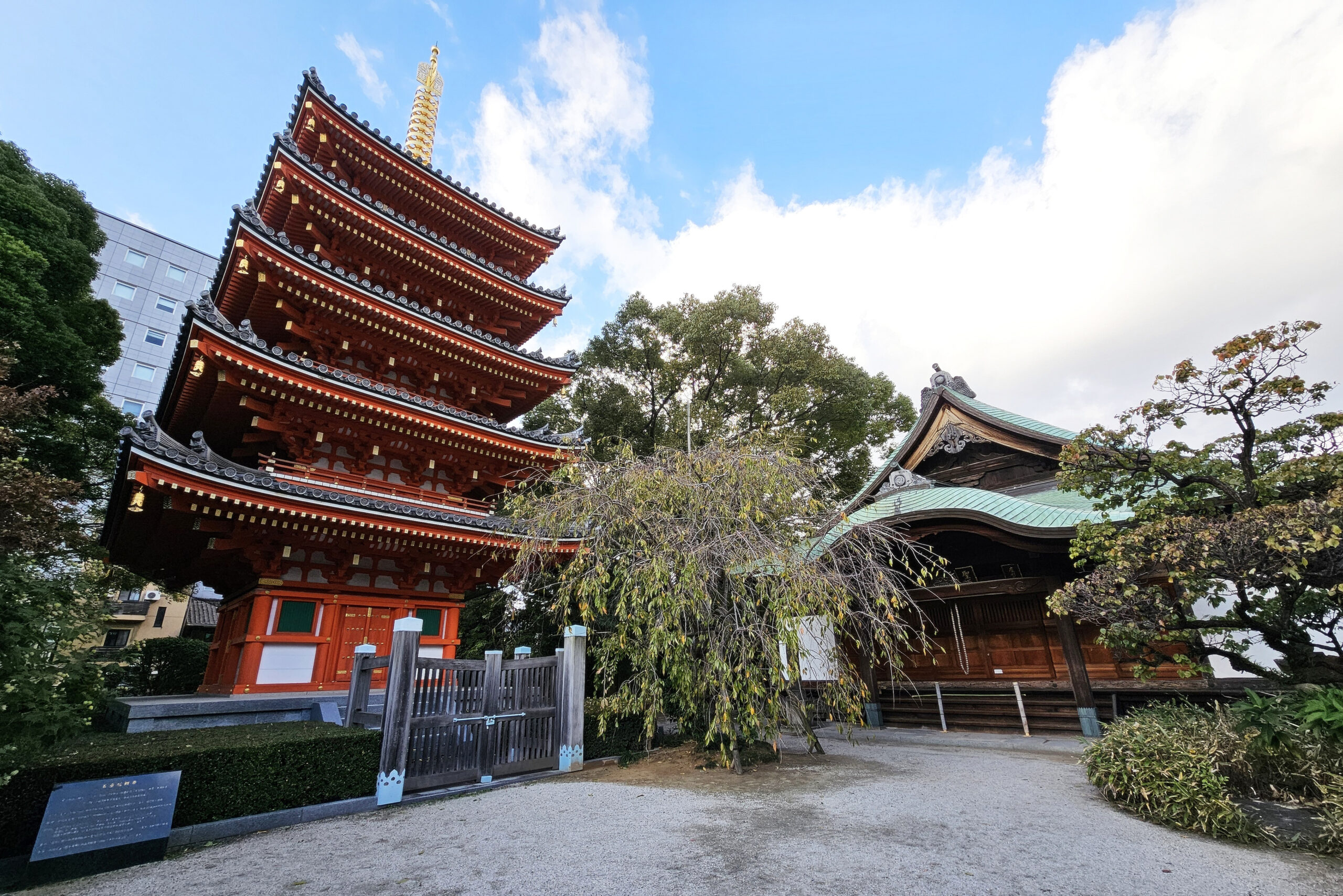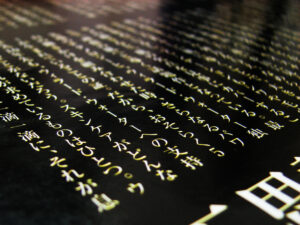Japan’s architectural landscape is renowned for its unique structures that mirror the nation’s rich cultural and spiritual heritage. One such structure, the Tahōtō, stands out for its distinctive design and historical significance. Characterized by its two stories, the Tahōtō represents a confluence of artistry and spirituality, deeply rooted in Buddhist traditions. This article seeks to unravel the rich history of the Tahōtō, exploring its origins, architectural features, cultural significance, and the challenges faced in preserving this unique pagoda style.
Understanding the Tahōtō: Japan’s Distinctive Pagoda Style
The Tahōtō, or "two-story pagoda," is an architectural form unique to Japan, often found in temple complexes. Unlike traditional pagodas, which typically have an odd number of tiers, the Tahōtō is characterized by its two distinct levels, each serving a specific purpose. The lower story typically houses a hall for worship, while the upper story often serves as a reliquary or storage for sacred texts and artifacts. This unique design reflects the blending of practical function and spiritual symbolism.
The origins of the Tahōtō are often traced back to the Heian period (794-1185), when Buddhist teachings began to influence Japanese architectural styles. The structure is believed to have evolved from the earlier, simpler pagoda designs, incorporating elements from both Chinese and indigenous Japanese traditions. As Buddhism flourished in Japan, so too did the need for dedicated spaces for worship, leading to the development of the Tahōtō as a distinct architectural form.
Culturally, the Tahōtō represents a significant embodiment of Buddhist philosophy, embodying the principles of enlightenment and duality. Its two levels symbolize the coexistence of the material and spiritual worlds, reflecting the Buddhist understanding of reality. This symbolic representation adds layers of meaning to the already intricate design, making the Tahōtō a focal point of study for historians and architects alike.
The Tahōtō is often adorned with intricate carvings and decorative elements that enhance its aesthetic appeal. These embellishments serve not only to beautify the structure but also to convey religious narratives and teachings. The overall composition of the Tahōtō showcases the meticulous craftsmanship and attention to detail that characterizes much of Japanese architecture, making it a visual delight for both worshippers and visitors.
As a distinctive pagoda style, the Tahōtō holds a unique place in Japan’s architectural canon. Its continued presence in temple grounds across the country speaks to its enduring significance and the appreciation for traditional craftsmanship. Understanding the Tahōtō provides insight into Japan’s broader cultural and religious landscape, illustrating how architecture can serve as a bridge between the material and spiritual realms.
In summary, the Tahōtō is not merely a physical structure; it is a testament to Japan’s rich history, cultural evolution, and spiritual beliefs. The unique features and symbolism inherent in its design provide a fascinating glimpse into the heart of Japanese Buddhism, making it a subject worthy of exploration and appreciation.
The Origins of Tahōtō: A Blend of Culture and Religion
The Tahōtō’s origins can be traced back to the Heian period, a time marked by significant cultural exchange between Japan and China. As Buddhism was introduced to Japan from the Asian mainland, it brought with it various architectural styles, including pagodas. The early Japanese pagodas were primarily inspired by Chinese designs, which featured multi-tiered structures. However, as the local culture began to intermingle with these foreign influences, unique adaptations emerged, leading to the creation of the Tahōtō.
During the Heian period, the Japanese elite began to embrace Buddhism more wholeheartedly, establishing temple complexes that reflected their newfound faith. The construction of pagodas became a symbol of status and devotion, prompting the need for innovative architectural forms. The Tahōtō emerged as a response to this demand, offering a distinct representation of Buddhist teachings while accommodating the aesthetic preferences of the period.
The design of the Tahōtō reflects a synthesis of various cultural elements, blending indigenous Shinto influences with Buddhist teachings. This fusion is evident in the pagoda’s architectural details, such as the use of natural materials and the incorporation of local artistic styles. The Tahōtō’s dual story allows for a diverse range of religious practices, providing a space for both communal worship and individual reflection.
In addition to its architectural significance, the Tahōtō also served as a spiritual beacon during a time of uncertainty in Japanese history. The growing popularity of Buddhism provided solace to many, and the presence of these pagodas in local communities fostered a sense of spiritual connection. As people flocked to temple grounds, the Tahōtō became a central hub for religious gatherings, teaching, and rituals.
Over time, the Tahōtō’s design began to evolve further, incorporating elements from later architectural movements, including the Kamakura and Muromachi periods. These adaptations aimed to enhance the structural integrity and overall aesthetic appeal of the pagoda, solidifying its place in Japan’s architectural narrative. Today, the Tahōtō stands as a testament to the resilience and adaptability of Japanese culture and the enduring power of Buddhist teachings.
In conclusion, the origins of the Tahōtō represent a rich tapestry of cultural and religious influences, showcasing the evolution of architectural forms in Japan. Through its design and function, the Tahōtō has become an essential component of Japan’s spiritual heritage, reflecting the nation’s history and its ongoing relationship with Buddhism.
Architectural Features That Define the Tahōtō Structure
The architectural features of the Tahōtō are what set it apart as a distinctive structure within the broader context of Japanese pagodas. Its most recognizable characteristic is its two-story design, which is supported by a robust foundation that ensures stability while allowing for the intricate detailing of the upper levels. Typically constructed from wood, the Tahōtō showcases the remarkable craftsmanship associated with Japanese architecture.
The lower story, often wider and more solidly built than the upper section, serves as the main hall for worship and gatherings. This design element emphasizes the significance of communal space while providing a sturdy base for the lighter, more delicate upper story. The upper portion is where the architectural beauty of the Tahōtō truly shines, often featuring a tiered roof that elegantly curves upwards, giving the structure a sense of grace and upward movement.
Another defining feature of the Tahōtō is its ornate roof tiles, which are often elaborately decorated. These tiles sometimes depict symbolic motifs related to Buddhist teachings, enhancing the pagoda’s spiritual significance. Additionally, the eaves of the roof extend outward, creating a protective overhang that shields the structure from the elements and adds to its visual appeal.
The use of traditional joinery techniques in the construction of the Tahōtō is a testament to the skill of Japanese craftsmen. These techniques allow for flexibility and durability, essential for withstanding Japan’s seismic activity. The absence of nails in the construction process is a hallmark of traditional Japanese architecture, and the Tahōtō exemplifies this method, showcasing the deep-rooted respect for natural materials and craftsmanship.
Moreover, the intricate carvings and decorative elements found throughout the Tahōtō contribute to its artistic value. These details often depict scenes from Buddhist scriptures or celestial beings, further emphasizing the pagoda’s role as a religious symbol. The interplay of light and shadow created by these carvings adds another layer of depth to the structure, inviting contemplation and reflection from visitors.
In essence, the architectural features of the Tahōtō not only define its physical appearance but also embody the spiritual principles of Buddhism. The thoughtful design and intricate craftsmanship serve as a reminder of the sacredness of space, making each Tahōtō a unique expression of faith and artistry.
The Significance of the Two Stories in Tahōtō Design
The two-story design of the Tahōtō is not merely a stylistic choice but carries profound spiritual significance within the context of Buddhist philosophy. Each level serves a distinct purpose, contributing to a deeper understanding of Buddhist teachings and practices. The lower story typically functions as a hall for communal worship, while the upper story often serves as a space to house relics, sacred texts, and other important religious artifacts.
This duality in design reflects the Buddhist concept of duality itself—representing the coexistence of the physical and spiritual realms. The lower level symbolizes the earthly domain, where followers engage in communal prayer and rituals. In contrast, the upper level signifies the celestial realm, where the divine is believed to reside. This separation invites practitioners to ascend from the worldly to the spiritual, mirroring the journey toward enlightenment.
The two stories also enable a diverse range of religious practices. The lower level’s spaciousness allows for gatherings, teachings, and ceremonies, fostering a sense of community among worshippers. Meanwhile, the upper level offers a more intimate setting for reflection and meditation, allowing individuals to connect with the divine on a personal level. This balance between communal and solitary practices enhances the overall spiritual experience of visiting a Tahōtō.
Furthermore, the design of the Tahōtō encourages visitors to engage in a physical journey as they progress from the lower to the upper level. This movement can be seen as a metaphor for the spiritual ascent toward enlightenment, whereby practitioners leave behind the distractions of the material world to reach a higher state of consciousness. The act of ascending the stairs symbolizes the effort and dedication required on the path to spiritual awakening.
In addition to its spiritual symbolism, the two stories of the Tahōtō also serve a practical purpose. The distinct levels create an architectural balance that enhances the structure’s stability, allowing it to withstand natural elements while maintaining its aesthetic appeal. This harmony reflects the Buddhist principle of balance in life, emphasizing the importance of equilibrium between the material and spiritual realms.
In summary, the significance of the two stories in Tahōtō design extends beyond mere aesthetics. It represents the fundamental principles of Buddhism, inviting practitioners to engage in a journey of spiritual growth while providing a space for communal worship. The thoughtful design of the Tahōtō encapsulates the essence of Buddhist teachings, making it a vital symbol within Japan’s religious landscape.
Historical Context: When and Why Tahōtōs Were Built
The construction of Tahōtō pagodas can be traced back to the Heian period, a time of significant cultural transformation in Japan. This period saw the flourishing of Buddhism as a dominant spiritual force, leading to the establishment of numerous temples and religious sites across the country. The rise of the aristocracy and their patronage of Buddhist institutions played a crucial role in the proliferation of Tahōtōs during this time.
Amidst a backdrop of political stability and economic prosperity, the Heian period allowed for the expansion of Buddhist teachings and architectural innovation. The construction of Tahōtōs became a way for temples to assert their importance and attract followers. These pagodas served not only as places of worship but also as symbols of status for the temple patrons, showcasing their commitment to the Buddhist faith.
The choice to build a Tahōtō was often linked to specific historical events or the emergence of influential figures within the Buddhist community. For instance, the establishment of major temple complexes, such as the famous Hōryū-ji in Nara, coincided with the construction of Tahōtōs. These pagodas became integral components of temple architecture, embodying the aspirations of the Buddhist clergy and their supporters.
As time progressed, the construction of Tahōtōs continued into subsequent periods, including the Kamakura and Muromachi eras. During these times, the pagoda evolved further, incorporating new architectural styles and techniques. The growing popularity of Zen Buddhism, for example, influenced the design of Tahōtōs, leading to a more minimalist aesthetic that emphasized simplicity and natural beauty.
The motivations behind building Tahōtōs were not solely rooted in religious fervor; they were also tied to the broader socio-political landscape. As Japan faced periods of upheaval and uncertainty, the construction of these pagodas provided a sense of stability and continuity. They served as a refuge for communities, offering a place for spiritual solace amidst the chaos of life.
In conclusion, the historical context surrounding the construction of Tahōtōs reveals a complex interplay of religious devotion, cultural evolution, and societal needs. These pagodas reflect the changing tides of Japanese history while remaining steadfast symbols of spiritual aspiration and community cohesion.
Exploring Major Tahōtō Examples Across Japan
Japan is home to numerous Tahōtō examples, each reflecting the unique history, culture, and architectural styles of its region. One of the most prominent Tahōtōs is located at Hōryū-ji in Nara, one of Japan’s oldest temples. This pagoda, built in the 7th century, is considered a masterpiece of early Japanese architecture and has been designated a UNESCO World Heritage Site. Its intricate designs and historical significance make it a vital representation of the Tahōtō style.
Another notable example is the Tahōtō at Tō-ji in Kyoto, a temple founded in the 9th century that showcases a unique blend of architectural elements. The pagoda’s exquisite carvings and tiered roof reflect the influence of both Japanese and Chinese styles. Tō-ji’s Tahōtō is renowned for its historical importance, having survived numerous earthquakes and fires over the centuries, which speaks to the durability of traditional Japanese construction techniques.
The Tahōtō at Daigo-ji, also in Kyoto, offers a slightly different interpretation of the design. This pagoda, constructed in the late Heian period, is notable for its vibrant colors and elaborate ornamentation. Daigo-ji’s Tahōtō is a vital example of how regional variations in style and technique contribute to the overall richness of the Tahōtō tradition.
In the northern part of Japan, the Tahōtō at Kōfuku-ji in Nara is another essential example, dating back to the late 8th century. This pagoda stands out for its graceful proportions and harmonious design, embodying the aesthetic principles of the Nara period. The structure’s resilient construction has allowed it to endure through various historical events, further solidifying its significance in the architectural landscape.
Traveling to the western region, the Tahōtō at Yakushi-ji in Nara is a treasure of Japanese history. Built during the Asuka period, this pagoda features a unique blend of Buddhist and indigenous architectural influences. Its distinct design illustrates the adaptability of the Tahōtō style while maintaining its spiritual essence.
In summary, the exploration of Tahōtō examples across Japan highlights the diversity and richness of this architectural form. Each pagoda tells a unique story, reflecting the historical context, cultural influences, and regional variations that characterize the Tahōtō tradition. Together, these structures contribute to Japan’s architectural heritage and continue to inspire generations of visitors.
The Role of Tahōtō in Buddhist Practices and Rituals
The Tahōtō plays a significant role in Buddhist practices and rituals, serving as a focal point for spiritual activities within temple complexes. As places of worship, these pagodas provide a dedicated space for communal gatherings, ceremonies, and individual reflection. The unique two-story design of the Tahōtō creates an environment that fosters both collective and solitary spiritual experiences, making it a vital component of Japanese Buddhism.
The lower level of the Tahōtō often functions as the main hall for worship, where devotees come together to engage in prayers and rituals. This communal aspect reinforces the sense of belonging and shared faith among practitioners. The presence of a Tahōtō within a temple complex often attracts visitors, creating a vibrant spiritual atmosphere that encourages participation in religious activities.
On significant Buddhist observances, such as Vesak or Obon, the Tahōtō becomes a site for special rituals and offerings. Devotees may gather to light incense, offer flowers, and recite sutras, creating a spiritually charged environment. These practices serve not only to honor the Buddha and other deities but also to cultivate a sense of community and shared devotion.
The upper level of the Tahōtō often serves as a reliquary or storage for sacred texts and artifacts. This space is typically reserved for more intimate practices, such as meditation and contemplation. The elevation of the upper story symbolizes the ascent towards spiritual enlightenment and encourages practitioners to engage in reflective practices that foster personal growth and understanding.
In addition to its role in communal worship and individual practices, the Tahōtō also serves as a physical manifestation of Buddhist teachings. The architecture and design of the pagoda embody core principles of Buddhism, such as impermanence and interconnectedness. As worshippers engage with the structure, they are reminded of the transient nature of life and the importance of spiritual cultivation.
In conclusion, the Tahōtō’s role in Buddhist practices and rituals is multifaceted, encompassing communal worship, personal reflection, and the embodiment of spiritual principles. This unique structure serves as a bridge between the material and spiritual worlds, allowing practitioners to engage with their faith on multiple levels.
Preservation Efforts: Safeguarding Tahōtō Heritage Sites
Preserving the Tahōtō is of paramount importance to maintain Japan’s rich cultural and religious heritage. As these structures age, they face various challenges, including natural disasters, weathering, and the effects of tourism. Preservation efforts focus on maintaining the architectural integrity of Tahōtōs while ensuring they remain functional spaces for worship and reflection.
Government agencies, alongside local communities and cultural organizations, play a crucial role in the preservation of Tahōtō heritage sites. Initiatives include regular inspections and maintenance programs to address structural issues before they escalate. These efforts are vital in protecting the pagodas from the effects of time and environmental factors, ensuring they continue to stand as symbols of spiritual devotion.
In addition to physical preservation, there is a growing emphasis on raising awareness about the cultural significance of Tahōtōs among younger generations. Educational programs and community events centered around these pagodas aim to instill a sense of pride and responsibility for their heritage. By involving the youth, preservation efforts seek to foster a deeper understanding of the importance of safeguarding these architectural treasures.
Restoration projects often employ traditional construction techniques and materials to maintain authenticity. Skilled artisans trained in ancient crafts are essential to these efforts, ensuring that repairs and restorations reflect the original design and craftsmanship of the Tahōtō. This commitment to authenticity enhances the overall integrity of the structure and honors the cultural traditions embedded within its construction.
Furthermore, tourism presents both opportunities and challenges for the preservation of Tahōtōs. While increased visitor numbers can generate revenue for maintenance efforts, it also puts pressure on the structures themselves. Balancing the need for accessibility with preservation efforts is essential to protect these heritage sites for future generations.
In conclusion, the preservation of Tahōtō heritage sites requires a multifaceted approach that combines physical maintenance, education, and community engagement. By safeguarding these unique structures, Japan honors its cultural and spiritual legacy, ensuring that the Tahōtō continues to inspire and connect generations of worshippers.
The Influence of Tahōtō on Modern Japanese Architecture
The influence of the Tahōtō extends beyond its historical context, impacting modern Japanese architecture in various ways. Contemporary architects often draw inspiration from the unique design elements and spiritual symbolism inherent in the Tahōtō. The two-story structure, intricate details, and harmonious proportions are reflected in modern buildings, blending traditional aesthetics with contemporary functionality.
One notable impact of the Tahōtō on modern architecture is the emphasis on natural materials. Many contemporary designs prioritize the use of wood, stone, and other organic materials, echoing the craftsmanship of traditional pagodas. This trend aligns with a broader movement towards sustainability, where architects seek to create structures that harmonize with their natural surroundings.
The spiritual essence of the Tahōtō also finds its way into modern architectural practices. Many contemporary buildings incorporate spaces for reflection, meditation, and community gathering, mirroring the duality of purpose found in the Tahōtō. This shift towards creating spiritually resonant








